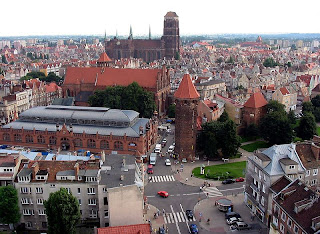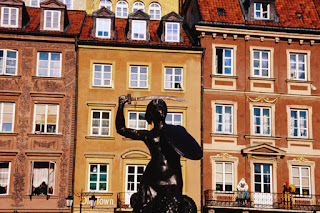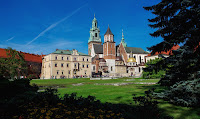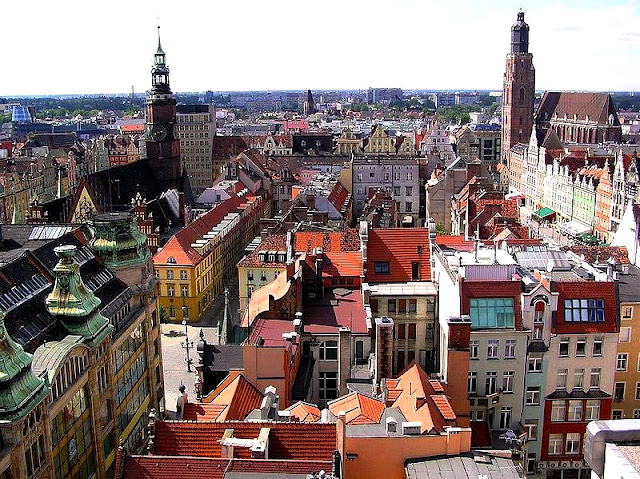Overrun countless times by marauding aggressors, subjugated to overbearing foreign rule for centuries, and now told their beloved vodka can be made from anything, the Polish nation has endured more than most. Yet Poland, a country crushed flat so many times it has become indestructible, is shaking off the last vestiges of forced slumber and rushing with great abandon into a modern 21st century.
Despite the country’s rush to embrace the future, its past cannot be ignored, particularly when it confronts you at every turn.
Warsaw may be embracing New World cuisine, café culture and clubs that never close, but you’ll still encounter peasant women selling bunches of flowers in its beautifully reconstructed Old Town. Drive across the country’s northern expanse and you’ll stumble upon a string of 14th-century Gothic castles, like the magnificent example at
Malbork, the last remnants of the once powerful Teutonic Knights. Catch a no-frills flight to
Kraków or
Wrocław and you’ll arrive in magnificent medieval centres. Or choose almost any major city, from
Lublin to
Poznań – and too many small towns – and you’ll bear witness to extermination camps established by Nazi Germany, derelict Jewish cemeteries, and dark political prisons, terrible reminders from the last 70 years. This massive land in the heart of
Europe has become the epitome of a changing continent.

Now a member of the EU, it is enjoying the rewards – and experiencing the challenges – of this exclusive club. Money has begun to flow into the country, repairing roads, building shopping malls and beautifying streets, but the progress is laboriously slow for some. Poland still has an unemployment rate twice as high as some of its EU compatriots, and its young, educated citizens are leaving in droves for wealthier pastures.
While the country’s cities rapidly modernise, its countryside continues to retain its rustic allure. In Poland’s southern reaches, dominated by tree-clad mountains, the cliché of horse-drawn carts transporting hay from the fields still holds true. Bucolic splendour spreads from the outskirts of urban centres as far as the eye can see, and pockets of primeval forest in the northeast shelter herds of wild bison. The clear waters of the
Great Masurian Lakes prove irresistible to sailors and kayakers, and the long, sandy beaches of the Baltic coast provide ample opportunity for summer seaside sojourns.

It is, however, in this rural expanse that Poland’s populist politicians gained a groundswell of support, which swept a conservative coalition government to power in 2005. Internally some saw it as a step backwards, and the then government’s anti-gay stance, ultra-Catholic bent and draconian intentions drew a rash of opprobrious criticism. Externally, Poland’s political moves in the last two years have also caused headaches; relations with
Germany sank to an all-time low since the fall of communism, and friction with
Russia rose to unsettling levels. However, elections in October 2007 changed Poland’s political landscape once again, with the liberal Civic Platform party winning the majority of votes.

Many breathed a sigh of relief, not least other EU leaders, who will now deal with the more pragmatic and pro-EU Prime Minister Donald Tusk. Yet Poland and its people should not be judged by the actions of its politicians. Poles remain doggedly warm and generous despite the massive upheavals, something many visitors can attest to. Even if you protest profusely, you will be forced to polish off a bottle of vodka or two, eat plate after plate of bigos (cabbage and meat stew), and join intense discussions on philosophy and politics, but it’s comforting to know that it’s all done with a love of life and an appreciation for the present, because no-one can be sure what tomorrow will bring.
But don’t take our word for it: spend some time here and you’ll discover a unique land where East meets West and helpings of joy and sorrow have been served up in equal proportions. And you’ll come away with new-found admiration for this unbreakable country.
Show in Lonely Planet Ready to go?
Ready to go? Kraków, which celebrated its 750th birthday in 2007, is by far Poland’s biggest drawcard, and it’s immediately apparent why. As the royal capital for 500 years, the city was able to absorb much history and talent over the centuries and is today a treasure trove of Gothic and Renaissance architecture. Miraculously, this jewellery box emerged largely intact after WWII. As a result, no other city in Poland can boast so many historic buildings and monuments or such a vast collection of artworks, with some 2.3 million registered.
Kraków, which celebrated its 750th birthday in 2007, is by far Poland’s biggest drawcard, and it’s immediately apparent why. As the royal capital for 500 years, the city was able to absorb much history and talent over the centuries and is today a treasure trove of Gothic and Renaissance architecture. Miraculously, this jewellery box emerged largely intact after WWII. As a result, no other city in Poland can boast so many historic buildings and monuments or such a vast collection of artworks, with some 2.3 million registered.
 Kraków is well endowed with attractions and diversions of a more modern variety, with hundreds of restaurants, bars and music clubs tucked away down its cellars and narrow alleyways. Though hotel prices are above the national average, and visitor numbers are very high in summer, this vibrant, cosmopolitan city is an essential part of any visit to Poland.
Kraków is well endowed with attractions and diversions of a more modern variety, with hundreds of restaurants, bars and music clubs tucked away down its cellars and narrow alleyways. Though hotel prices are above the national average, and visitor numbers are very high in summer, this vibrant, cosmopolitan city is an essential part of any visit to Poland. Show in Lonely planetReady to go?
Show in Lonely planetReady to go?











































